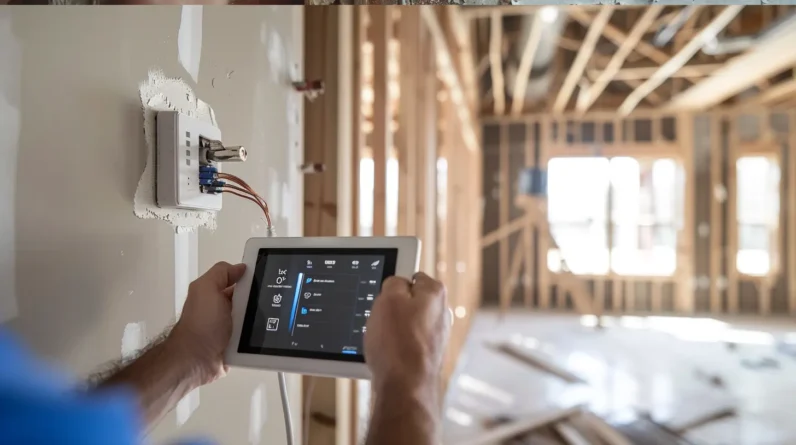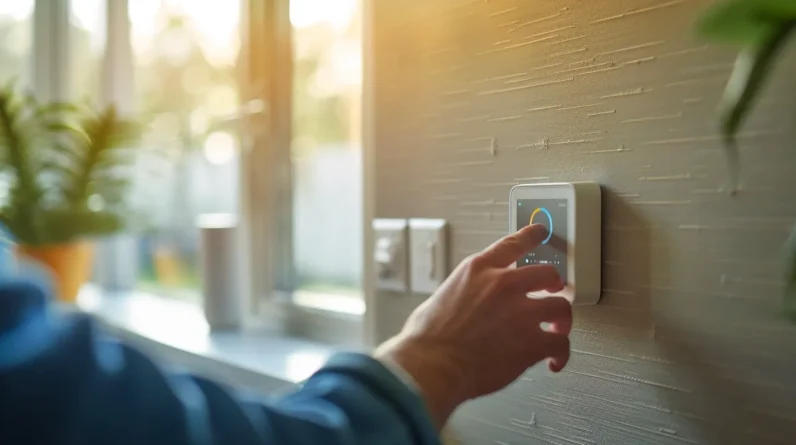
Smart home devices promise efficiency but hide substantial costs we’re never told about upfront. We’re wasting $100-200 annually on phantom power as network chips and voice assistants run continuously. Our data becomes corporate property—voice prints, behavioral patterns, and biometric information collected indefinitely. Meanwhile, discontinued software support creates 57.4 million metric tons of e-waste yearly, with only 17.4% properly recycled. Default credentials and unpatched firmware leave our homes vulnerable to attackers. The full scope of these trade-offs reveals why manufacturers emphasize convenience over transparency.
The Phantom Power Problem: Energy Drain You Can’t See
Energy Monitoring data shows households waste $100-200 annually on this invisible drain. Manufacturers prioritize instant responsiveness over efficiency, keeping network chips, voice assistants, and status lights perpetually active. We’re basically paying for the privilege of millisecond response times.
For stakeholders seeking energy optimization, the math is unforgiving: phantom power negates the efficiency gains these devices supposedly deliver.
Security Vulnerabilities in Your Connected Home
While we’re hemorrhaging money on phantom power, we’re simultaneously exposing our homes to attack vectors that didn’t exist a decade ago. Every connected device represents a potential breach point, and manufacturers consistently prioritize convenience over Network Security.
The vulnerabilities we’re introducing include:
- Default credentials that never change – 87% of consumers don’t modify factory-set passwords, creating trivial entry points for attackers
- Unpatched firmware across Device Management systems – Most smart devices receive security updates for less than two years after purchase
- Inadequate network segmentation – Your smart lightbulb shares the same network as your financial data
We’re building sophisticated homes on fundamentally insecure foundations, trading marginal efficiency gains for substantial security risks that compound with every device we add.
Planned Obsolescence and the Growing E-Waste Crisis
Beyond the security nightmares, we’re confronting an accelerating obsolescence cycle that transforms yesterday’s essential devices into tomorrow’s toxic waste. Manufacturers deliberately limit device lifespan through discontinued software support, forcing replacements every 2-3 years despite functioning hardware. When your smart thermostat loses cloud connectivity or your hub stops receiving updates, you’re left with orphaned technology containing hazardous materials.
The numbers reveal our complicity: global e-waste reached 57.4 million metric tons in 2021, yet only 17.4% underwent proper hardware recycling. We’re stockpiling rare earth metals in landfills while mining new deposits. This isn’t accidental—it’s engineered consumption benefiting manufacturers while communities near disposal sites suffer toxic contamination. Until we demand interoperability standards, repairability, and extended support commitments, we’re merely renting devices destined for environmental harm.
Privacy Trade-Offs: What Your Smart Devices Know About You
Every conversation with your voice assistant, every room your robot vacuum maps, every temperature adjustment on your smart thermostat—these aren’t just conveniences you’ve purchased. They’re data streams feeding corporate repositories. User surveillance has become the business model sustaining “affordable” smart devices.
Consider what you’re actually trading:
- Behavioral patterns – Your daily routines, sleep schedules, and presence patterns create valuable predictive profiles
- Consumption data – Energy usage, entertainment preferences, and purchasing behaviors inform targeted advertising ecosystems
- Biometric information – Voice prints, facial recognition data, and movement patterns persist indefinitely in corporate databases
Data collection occurs continuously, often transmitted to third-party partners you’ve never vetted. We’re not just consumers anymore—we’re the product being packaged and monetized by surveillance capitalism’s infrastructure.
The Environmental Impact of Cloud Infrastructure and Data Centers
As we offload processing to “the cloud,” we’re obscuring a physical reality: massive data centers consuming electricity at industrial scales. Every voice command we send to Alexa or Google requires server farms that collectively account for roughly 1% of global electricity demand. This carbon footprint rivals entire nations, yet manufacturers rarely disclose these environmental costs in their marketing materials.
The issue extends beyond energy consumption. Building these facilities demands significant resource extraction—rare earth minerals for servers, water for cooling systems, and land for expansion. When we choose cloud-dependent devices over local processing alternatives, we’re making implicit environmental trade-offs. Stakeholders from manufacturers to policymakers must acknowledge these externalities and develop transparent metrics for measuring our smart homes’ true ecological impact.
Conclusion
We’ve examined the evidence: smart home devices aren’t as efficient as manufacturers claim. The data reveals significant hidden costs—from phantom power drains to mounting e-waste, from security vulnerabilities to privacy invasions. While industry stakeholders promote convenience, they’re externalizing environmental and social costs onto consumers and communities. The theory that “smart” equals “sustainable” doesn’t hold up under scrutiny. We need to demand transparency, robust security standards, and genuine lifecycle accountability before embracing the next wave of connected devices.







